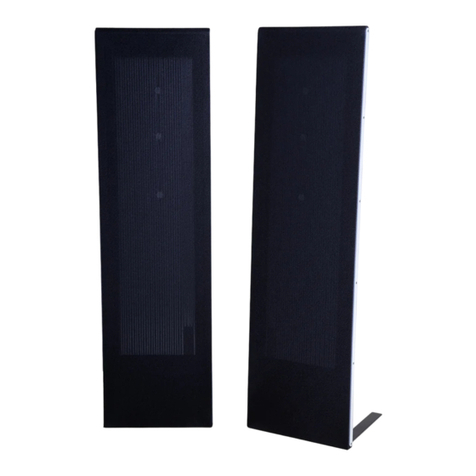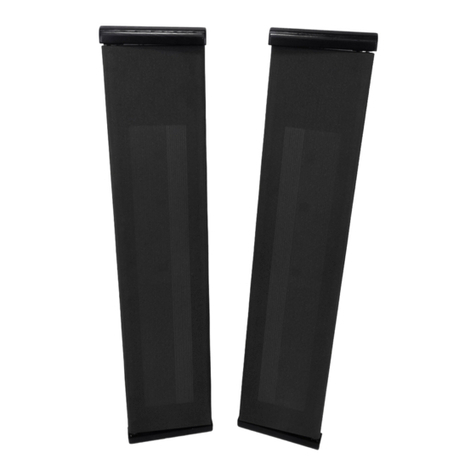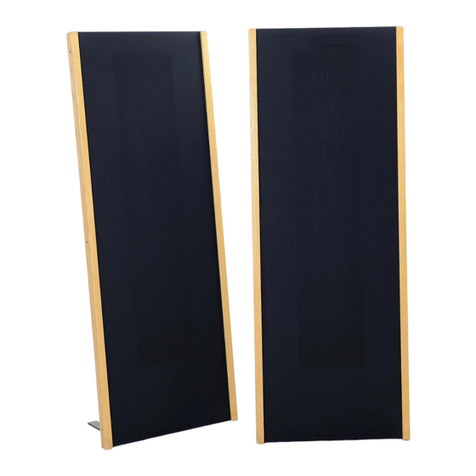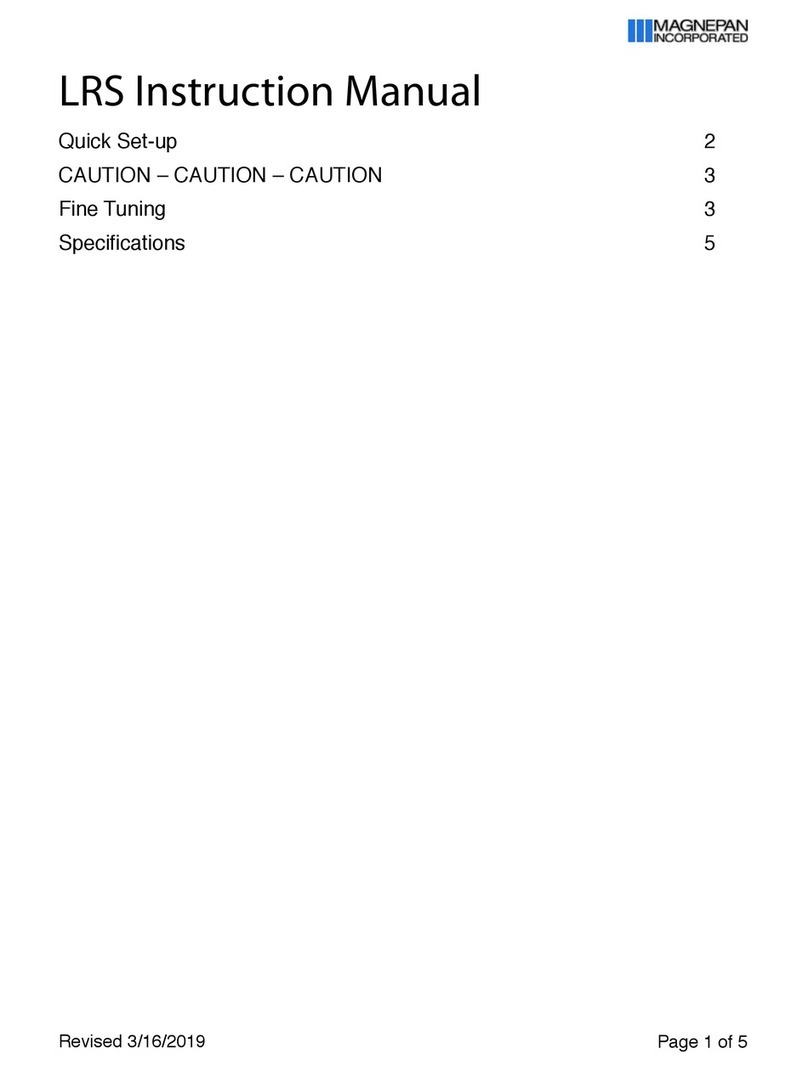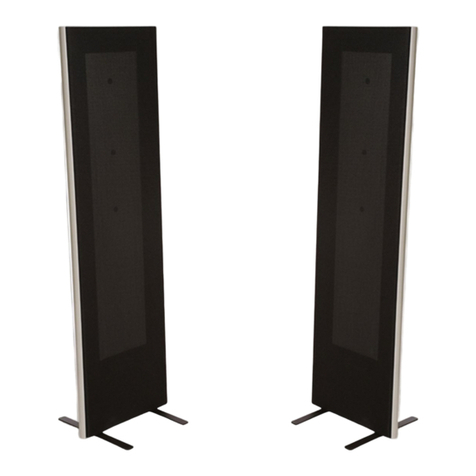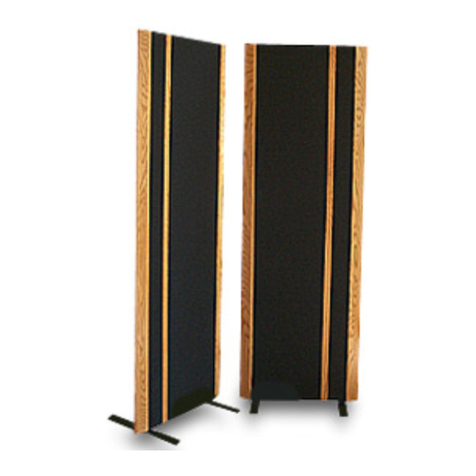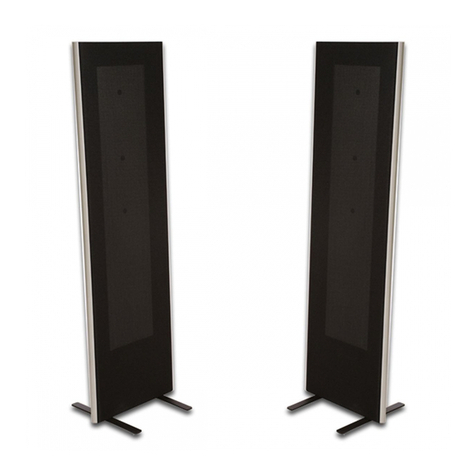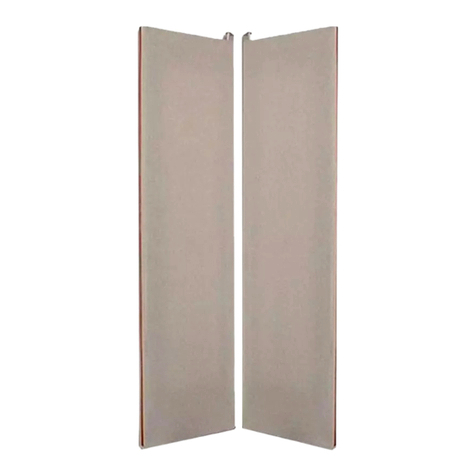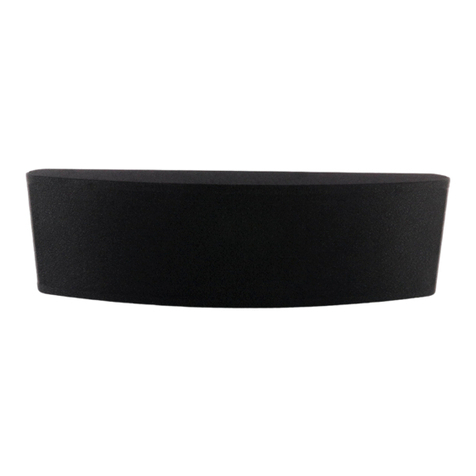
C) INSTALLATION USING BUILT-IN “T” NUTS
As shown below, there are 3 “T” nuts built into the top and botto of the CC3, at
the designated locations. These built-in T nuts allow hanging or any other type
of installation you ay devise. CAREFULLY burn a hole in the cloth with a hot
soldering tip or a ethod that will seal the hole in the cloth. Eye-bolts or hooks
ay be installed in the built-in nuts, and use ¼-inch X 20-inch threads.
D) DAMPING
When the CC3 is placed close to a rear wall, the sound quality can usually be
i proved with a da ping aterial, such as a wall hanging, behind the speaker.
6. PROCESSOR SETTINGS
Set the processor center channel for “s all” center channel speaker. If your processor
provides variable crossover points for “s all” center channel speaker, try crossover
points between 100-200 Hz. Set the processor for “large” left/right speakers (if you
have Magneplanar on-wall speakers, such as MMG Ws or MC1s, set the processor for
“s all” left/right speakers.
Set the processor for “no subwoofer”. Even if you are using a subwoofer, you will get
better perfor ance fro your MMG C by using the “no subwoofer” setting on the
processor. If you want an explanation for this unusual set up procedure, please call
Magnepan.
Connect your subwoofer to the left/right prea p outputs of your receiver or processor.
Set the subwoofer crossover points to the lowest frequency setting. Move the
crossover point slowly to a higher frequency as you are listening to usic. When the
subwoofer overlaps with the Magneplanar, the bass will beco e “ uddy”. When this
happens, lower the crossover point.
7. AMPLIFICATION
WARNING: The CC3 is a 4 oh speaker. Be certain the a plifier or receiver you are
using is capable of driving a 4 oh load. If you are uncertain, call the anufacturer of
the a plifier.
8. OPTIONAL TWEETER ATTENUATION
The CC3 is provided with the eans to reduce the output level of the tweeter section.
If the surrounding walls of the listening roo are exceptionally reflective, the overall
perceived acoustical balance of the speaker will be tipped towards a “hot” high end.
Attenuating the tweeter can help re edy this proble .



